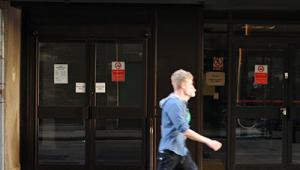
Image © Shutterstock
The report by the Institute for Fiscal Studies, funded by the Joseph Rowntree Foundation, found that many households remortgaging or taking out new mortgages since 2022 had experienced sharp falls in their disposable income because of spiralling interest rates.
In all, it estimates that 320,000 people were forced into poverty by the end of last year as a result.
However, only two-thirds of that number – 230,000 – would have been captured by official poverty statistics, which use average interest rates to model mortgage interest payments instead of measuring payments directly to reflect the significant variation in rates between households.
The disparity between statistics and reality is likely to widen further as more fixed-term mortgages come to an end, the IFS said.
The poverty figures also failed to take account of the fact that increased energy and food prices meant that lower-income households and pensioners faced a higher-than-average inflation rate.
Because of that discrepancy, a further 210,000 people found themselves poverty who would not have been included in the official statistics.
Sam Ray-Chaudhuri, a research economist at IFS and an author of the report, said that although rising mortgage rates played an important role in households’ living standards, they were not properly measured in the official income data.
“This has led to the headline statistics understating the number of people in poverty, something set to get worse in next year’s data,” he said.
Poverty rises had also been understated because of the unequal impact of inflation.
“At a time when rates of deprivation and food insecurity have risen substantially, poverty statistics that hide the real scale of these increases risk policymakers missing what is truly happening to poverty,” said Ray-Chaudhuri.
JRF chief analyst Peter Matejic said the report raised questions over the capacity of the social security system to meet the financial challenges with which households were grappling.
“The new government can’t wait for growth, after years of cuts, caps and freezes to social security have left families without the financial resilience and security they needed to cope with higher prices and costs,” he said.
The Local Government Association said the figures revealed in the report made it crucial that the Household Support Fund – a scheme administered by councils to directly help those most in need – should be extended.
In the Spring Budget, an additional £500m was allocated to the fund to allow it to operate for another six months.
Pete Marland, chair of the association’s economy and resources board, said the scheme was a “vital safety net” for those struggling to afford food, heat and other essentials.
“High housing costs are closely associated with poverty and councils want to continue to support residents who are struggling with the cost of living as much as possible,” he said.
“With the fund due to expire at the end of September, an extension is crucial to continue support for residents through winter.”
Ultimately, councils wanted to shift away from short term, crisis support towards investment in preventative services to improve people’s financial resilience and life chances, said Marland.
Earlier this year, the Work and Pensions Committee called for the fund to become a permanent feature of the social security landscape to allow local authorities to better plan their provision of discretionary support.



















